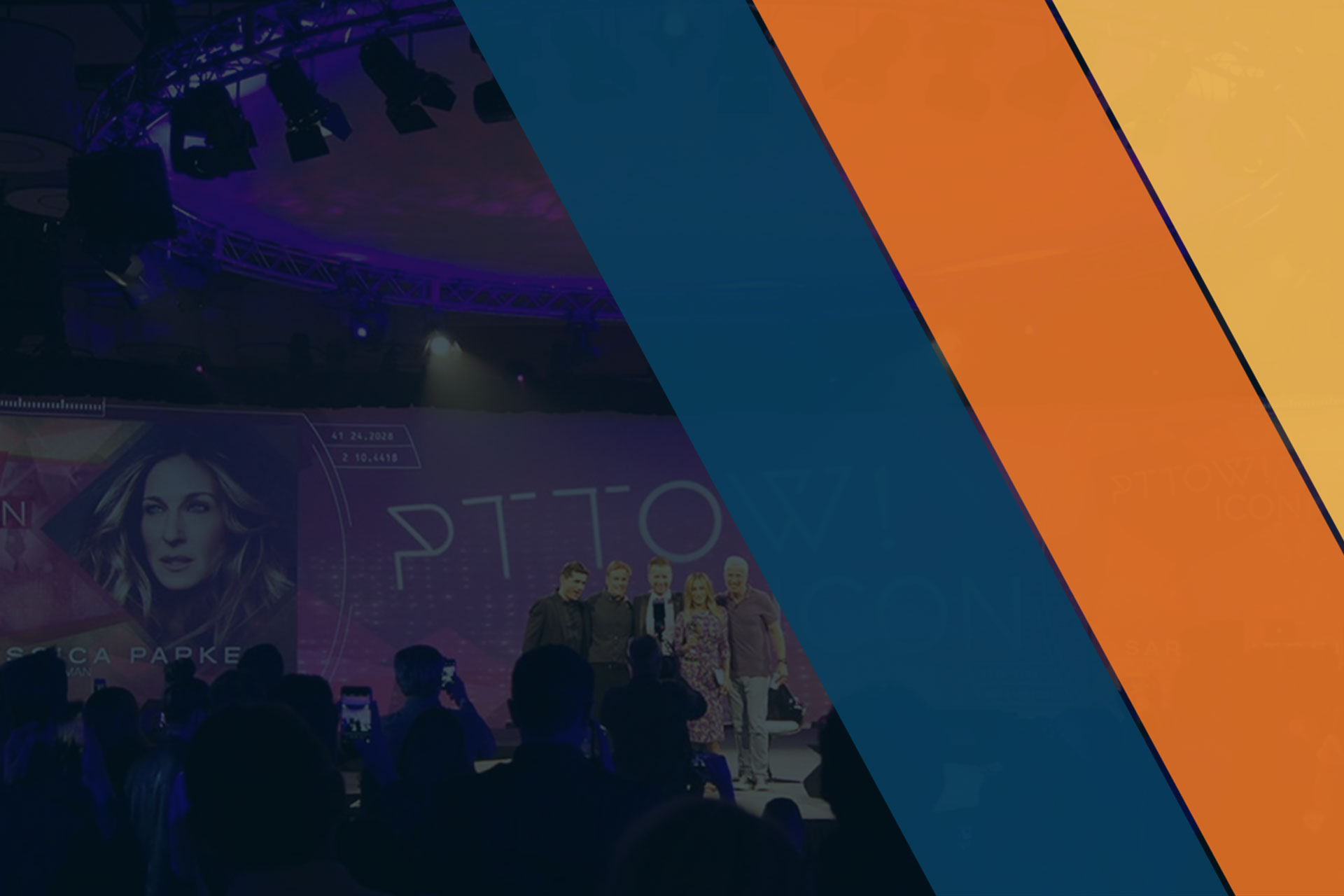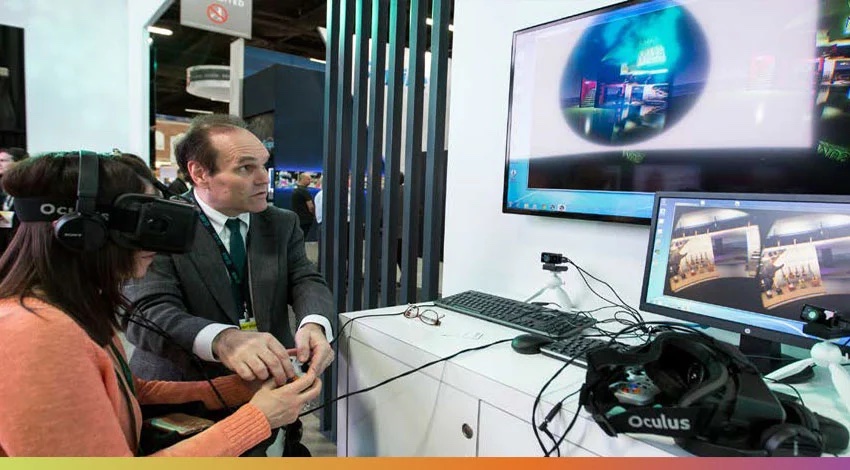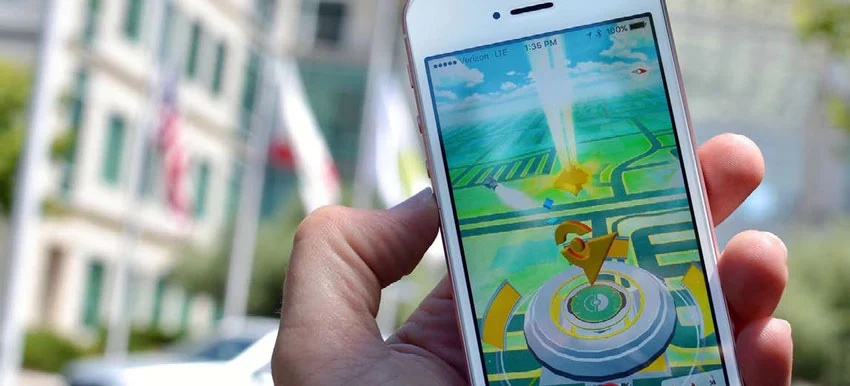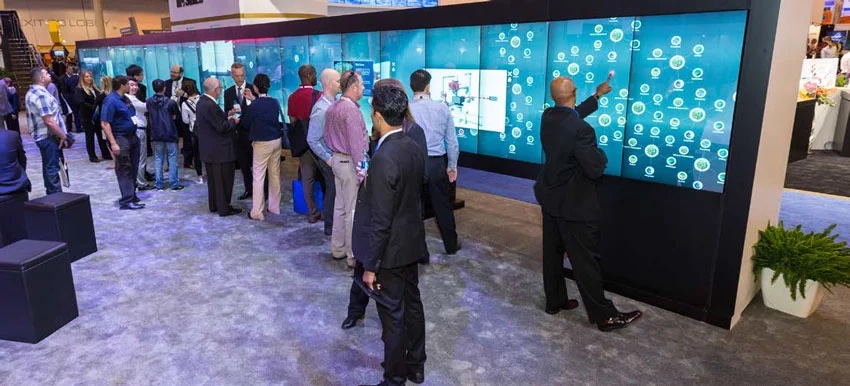

4 Top Event Tech That Make an Impression on Attendees [Tech Series]

Event management can often feel more like “event wrangling” or “event corralling.” But with the help of technology, you can get an easier handle on things. Here are some of our favorite ways technology can help you manage attendees and make an impression.
Event technology spans many categories. When it comes to your audience, there’s tech that helps with organizational or event efficiencies and tech that excites the crowd. In this article, we’re going to cover a few categories of tools that can help you manage and engage your attendees in ways you may not have considered.
Event Tech That Impresses, Helps Word of Mouth
Have you ever been to an event that has left your jaw hitting the floor in awe? That type of attention-grabbing, big impression – usually right at the beginning of your event - is beneficial for several reasons:
 It gets your audience talking about you/your event and how amazing it is
It gets your audience talking about you/your event and how amazing it isBut you can do more than just aim to amaze. You can use those wow moments for practical purposes as well, like increasing adoption of your event app. Event apps are a great means for collecting data and analyzing audience preferences. They also allow you to cut down on printing and paper waste. But they are only as effective as your adoption rate.
One company found a creative way of using tech to improve its event app adoption rate. At their Xperience17 Conference in Orlando, YourMembership (now part of Community Brands) created a Harry Potter-esque themed app and invited users to a Wizarding Conference and School of Membership and Engagement.
They added a Harry Potter gamification component to their app, and sorted attendees into competing teams. And guess what happened? A whopping 88% of attendees downloaded the app!
Event Tech Eases Processes and Increases Efficiencies
While on the surface easing processes and increasing efficiencies doesn’t sound like something your attendees would enjoy, they greatly benefit from it because it makes their experience smoother and allows them to feel fewer hiccups during attendance. Some of that tech includes:
Event Diagramming Software
Remember the days of poster boards and sticky notes giving way to whiteboards and accidentally erasing plans? With today’s 3D walkthrough software, planners can see just how seating and traffic flow may occur. They can plan for hotspots, making those areas available to top sponsors and eliminate or mitigate log; jams early on before they become troublesome.
Artificial Intelligence
The use of artificial intelligence is becoming an everyday thing for most of us thanks to Siri, Google, Cortana, and Alexa. In fact, the immediacy of answers provided through this technology does two things at events, provides your attendees with valuable, always-available resources, and it gives event planners measurable data with improving efficiency. SXSW’s chatbot fielded 56,000 questions during its first year of operation. That’s 56,000 fewer questions for your staff.
AI Concierge, image source: https://www.sxsw.com/news/2018/introducing-abby-personal-ai-concierge-sxsw-2018/
Facial Recognition
From security to personalized preferences, facial recognition is helping event planners do more with greater efficiency. But that’s not why your audience will love it. They’ll enjoy facial recognition because it provides them with personalized attention and the ability to connect with others (or experience things) they might have missed. For instance, you can use facial recognition software to tag people in photos, or to ensure their favorite drink is available the moment they step to the bar. It can also capture and recognize changes in audience facial movements and emotions, giving speakers and planners a real-time gauge on the presentation.
Event Tech Pulls Attendees in for Increased Interaction
All event planners want increased engagement. It’s the golden chalice we’re all chasing because it means more loyal attendees who will pay higher ticket prices, leading to sold-out events and increased revenue. Sold-out events mean sponsors will be knocking down the doors, right? There are many technology tools that can help increase engagement. Here are a few of our favorites:
Augmented Reality
Augmented reality (AR) doesn’t require the special headgear of virtual reality. Most commonly it’s accessed through the attendee’s smartphone. AR can be used to add things to the attendee’s view the way Pokemon Go! displayed characters against real landscapes.

If you’re not sure how you could incorporate that in your event, consider what information attendees are missing. What will make their experience more valuable? What do they need? Royal Caribbean Cruise Lines is using this technology to provide additional information on the artwork in the hallways and upsell shore excursions. You might allow attendees to access portions of the agenda (which sessions will be held nearby) merely by focusing their smartphone on a conference room door.
Social Media
Everyone knows social media is a great way to engage an audience, but are you using it to its full effect - as a way to draw them in and give them content they can’t get elsewhere? One way to do this is as a behind-the-scenes excitement generator. Ask speakers to get up close and personal, showing things people wouldn’t otherwise see. Give some suggestions, but not scripts - that can feel too forced and doesn’t aid in the transparency. If your event audience is on Snapchat, encourage your speakers to have a little fun with the filters on their own and with attendees. Just ensure that they use your event hashtag.
Touchscreens
Let’s face it, no matter what our age, people enjoy playing. That’s why using large touchscreens in public areas of the event can be a smart move. While they are fun and people will look for reasons to use them, play is not their only benefit. You can control flow and excite those waiting in lines and crowded areas by introducing recordable touchscreens. Imagine the insights you could harvest as your attendees are enjoying themselves with your questions and games.

Touchscreens can be programmed to do anything from taking selfies to reflecting like funhouse mirrors, providing directions and schedule information. Think about what needs your audience has, what fun fits them best, and what works with the space. Faster moving spaces can use touchscreens for quick activities, while slower-moving spots where people mingle could employ fun 5-10 question quizzes like what’s found on Facebook (If you were an animal you would be a….).
Event Tech Delivers on Results for Bigger Insights and Actions
How many times have you said, “If only I had known...”? Regrets are often based on lack of insight. You could’ve done so much more if only the attendees or sponsors had called something to your attention. But we can’t rely on them to be as forthcoming with needs and desires. Tech can help.
Experience Polling
Experience polling allows for real-time results so event planners can address issues when there’s a problem, not apologizing for them afterward. It also helps keep the audience engaged with what’s going on around them, and if discomforts are addressed before they become bigger issues, using experience polling may also improve overall event satisfaction scores of attendees, exhibitors, and sponsors. For example, an event planner can ask attendees in a quick/flash poll how they’re feeling at the moment. Is the room too cold? Are you hungry? Tired? Etc. They can then actionably use that information to improve the attendee experience.
This type of real-time monitoring makes attendees, exhibitors, and sponsors feel spoiled (in a good way) and puts the event planner completely in control, anticipating issues and addressing them before they become larger distractions.
via GIPHY
Real-time polling can also be used for crowdsourcing ideas for the ultimate in event personalization. Let the audience decide how deep they want to get into the topic by polling their experience. Get more information about their backgrounds. Find out who wants to partake in an impromptu running club the following morning. These types of questions and flash activities can add a lot of zing to your event but will require agility from your team.
In Conclusion
Keep in mind that technology is but a tool for us to accomplish bigger and better things. It helps us do more with fewer resources but only when used toward event goals. Don’t adopt it for adoption’s sake.
Event tech will continue to play a big role in events just like price points for purchases and rentals continue to become more affordable. Another major factor that will be entering the event market in the next half-decade (or less for large-scale markets) is 5G technology. It’s expected to boost speeds on smartphone networks by 100 times based on what we have now. This will usher in a completely new era of app capabilities and venue offerings in the near future.
We’ve shared our favorites when it comes to event tech. Now it’s your turn. What are we missing?

